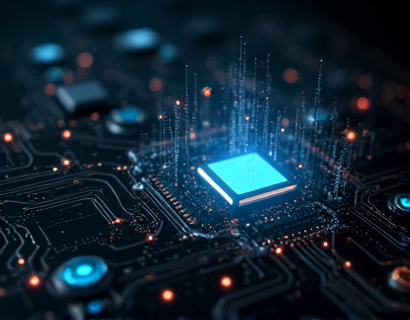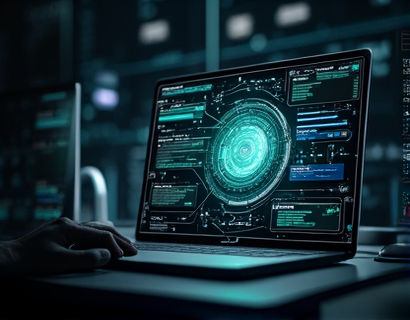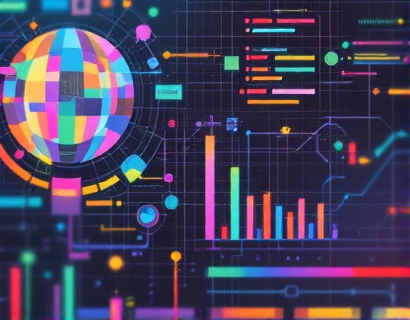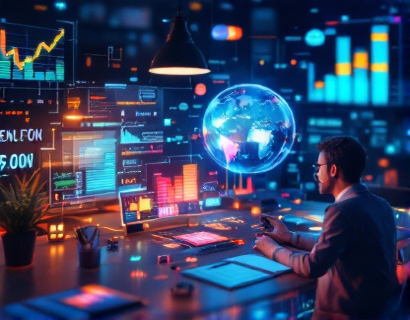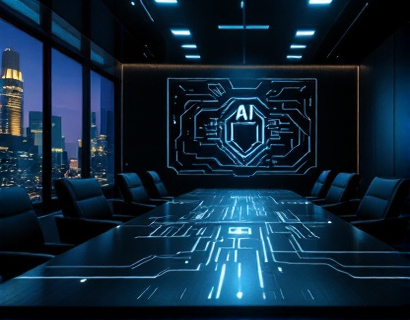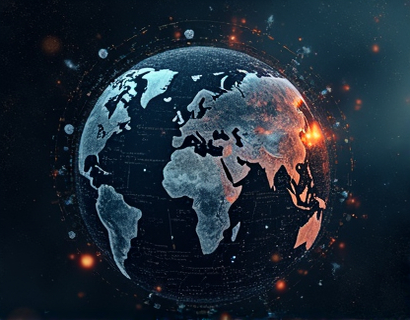Revolutionizing Digital Engagement: The Synergy of Crypto and AI in Next-Gen Ucosystem Solutions
The intersection of cryptocurrency and artificial intelligence (AI) is giving rise to transformative solutions that are redefining digital interactions. This fusion is not only enhancing user experiences but also driving unprecedented growth across various sectors. As we explore this dynamic landscape, it becomes evident that the integration of these technologies is unlocking new levels of connectivity, innovation, and engagement. This article delves into the cutting-edge advancements that are shaping the future of digital ecosystems, offering insights into how these technologies are converging to create more intuitive, secure, and efficient platforms.
Understanding the Basics: Cryptocurrency and AI
To fully appreciate the impact of crypto and AI on digital engagement, it's essential to understand the fundamentals of both technologies. Cryptocurrency, often referred to as digital or virtual currency, operates on blockchain technology, a decentralized ledger that ensures transparency, security, and immutability. This technology underpins various applications beyond mere financial transactions, including smart contracts, decentralized finance (DeFi), and non-fungible tokens (NFTs).
Artificial intelligence, on the other hand, encompasses a range of technologies designed to simulate human intelligence processes such as learning, reasoning, and self-correction. AI algorithms can analyze vast amounts of data, identify patterns, and make predictions or decisions with minimal human intervention. The combination of these two technologies is creating powerful tools that can enhance user experiences and drive innovation in the digital space.
The Role of Blockchain in Enhancing Trust and Security
One of the most significant contributions of blockchain technology to digital engagement is the enhancement of trust and security. By providing a transparent and tamper-proof record of transactions, blockchain ensures that users can interact with digital platforms with confidence. This is particularly crucial in the realm of cryptocurrency, where trust is paramount. AI can further bolster this trust by detecting and preventing fraudulent activities through advanced analytics and machine learning algorithms.
For instance, AI-driven systems can monitor transaction patterns in real-time, identifying anomalies that may indicate fraudulent behavior. This proactive approach not only protects users but also fosters a more secure and reliable digital environment. In the context of Ucosystems, where multiple applications and services are interconnected, blockchain and AI together create a robust framework that enhances overall system integrity.
AI-Powered Personalization: Tailoring User Experiences
Personalization is a key factor in enhancing user engagement, and AI is at the forefront of delivering tailored experiences. By analyzing user behavior, preferences, and interactions, AI algorithms can create personalized content, recommendations, and interfaces that resonate with individual users. This level of customization not only improves user satisfaction but also increases the likelihood of sustained engagement.
In the context of Ucosystems, AI can analyze data from various sources, including social media, browsing history, and app usage, to create a comprehensive user profile. This profile enables the system to deliver content that is relevant and timely, thereby enhancing the overall user experience. For example, a news aggregator app powered by AI can curate articles based on a user's reading habits and interests, ensuring that the content is both engaging and valuable.
Enhancing User Interaction Through Chatbots and Virtual Assistants
Chatbots and virtual assistants are becoming increasingly sophisticated thanks to advancements in AI. These AI-driven tools can provide instant, context-aware support to users, answering queries, guiding them through processes, and offering personalized recommendations. In a Ucosystem, where multiple services and applications are integrated, chatbots and virtual assistants play a crucial role in streamlining user interactions and improving efficiency.
For instance, a virtual assistant can help users navigate through a complex app by providing step-by-step instructions, answering frequently asked questions, and even predicting user needs based on past interactions. This not only reduces the cognitive load on users but also enhances their overall experience by making the platform more intuitive and user-friendly. AI-powered chatbots can operate 24/7, ensuring that user support is always available, which is particularly valuable in a global and connected digital landscape.
Decentralized Identity Management: Empowering Users
Decentralized identity management is another area where the combination of blockchain and AI is making a significant impact. Traditional identity management systems are centralized, making them vulnerable to breaches and misuse. By leveraging blockchain, users can have control over their digital identities, storing and managing their credentials securely and privately.
AI can enhance this process by verifying identities through biometric data, such as facial recognition or fingerprint scans, and by analyzing behavioral patterns to ensure that the user is indeed the rightful owner of the identity. This dual approach not only enhances security but also provides users with greater control over their personal information. In a Ucosystem, where privacy and security are paramount, decentralized identity management offers a compelling solution that aligns with user expectations.
Predictive Analytics: Anticipating User Needs
Predictive analytics, powered by AI, is revolutionizing how Ucosystems anticipate and respond to user needs. By analyzing historical data and real-time insights, AI algorithms can predict user behavior and preferences, enabling platforms to proactively offer relevant services and content. This predictive capability is particularly useful in areas such as content recommendation, ad targeting, and user retention strategies.
For example, a streaming service can use AI to predict which shows or movies a user is likely to enjoy based on their viewing history and current trends. This not only enhances the user experience by providing personalized content but also increases engagement by keeping users on the platform longer. In a Ucosystem, where multiple services are interconnected, predictive analytics can orchestrate a seamless and cohesive user journey across different applications.
Smart Contracts: Automating Trustless Transactions
Smart contracts are self-executing contracts with the terms of the agreement directly written into code. They run on blockchain networks, ensuring that transactions are executed only when predefined conditions are met. This automation reduces the need for intermediaries, lowering costs and increasing efficiency. In a Ucosystem, smart contracts can facilitate various types of transactions, from financial payments to content distribution, all while maintaining transparency and security.
AI can further enhance smart contracts by providing smart contract optimization and risk assessment. AI algorithms can analyze the code to identify potential vulnerabilities or inefficiencies, ensuring that the smart contract functions as intended. This combination of technologies ensures that transactions are not only secure and transparent but also optimized for performance.
Enhancing Data Privacy Through AI and Blockchain
Data privacy is a growing concern in the digital age, and the integration of AI and blockchain offers innovative solutions to protect user data. Blockchain's decentralized nature inherently provides a higher level of privacy compared to centralized systems, but AI can take this a step further by implementing advanced encryption and anonymization techniques.
For instance, AI can generate synthetic data that mimics real user data without exposing sensitive information. This synthetic data can be used for training AI models, ensuring that the original data remains secure and private. Additionally, AI can monitor and manage access to data, ensuring that only authorized parties can view or use it. In a Ucosystem, where data is a valuable asset, these measures are crucial for maintaining user trust and compliance with data protection regulations.
Fostering Innovation Through Collaborative Ecosystems
The convergence of cryptocurrency and AI is not only enhancing individual applications but also fostering a collaborative ecosystem where innovation thrives. Developers, businesses, and users are coming together to create a more interconnected and dynamic digital environment. This collaborative approach encourages the sharing of knowledge, resources, and best practices, leading to faster and more impactful advancements.
Ucosystems serve as a platform for this collaboration, providing a space where different stakeholders can interact and co-create. By leveraging blockchain for secure and transparent transactions and AI for intelligent and personalized experiences, these ecosystems are setting new standards for digital engagement. The result is a more resilient, adaptive, and user-centric digital landscape that is poised for sustained growth and innovation.
Conclusion: The Future of Digital Engagement
The fusion of cryptocurrency and AI is ushering in a new era of digital engagement, characterized by enhanced security, personalization, and efficiency. As these technologies continue to evolve, we can expect even more sophisticated solutions that further blur the lines between the physical and digital worlds. Ucosystems, powered by blockchain and AI, are at the forefront of this transformation, offering a glimpse into a future where digital interactions are not only seamless but also deeply meaningful.
For those interested in exploring this exciting frontier, platforms like Ucosystem provide a gateway to the latest advancements in crypto and AI. By staying informed and engaged, individuals can harness the power of these technologies to enhance their digital experiences and contribute to the ongoing evolution of the tech landscape.



